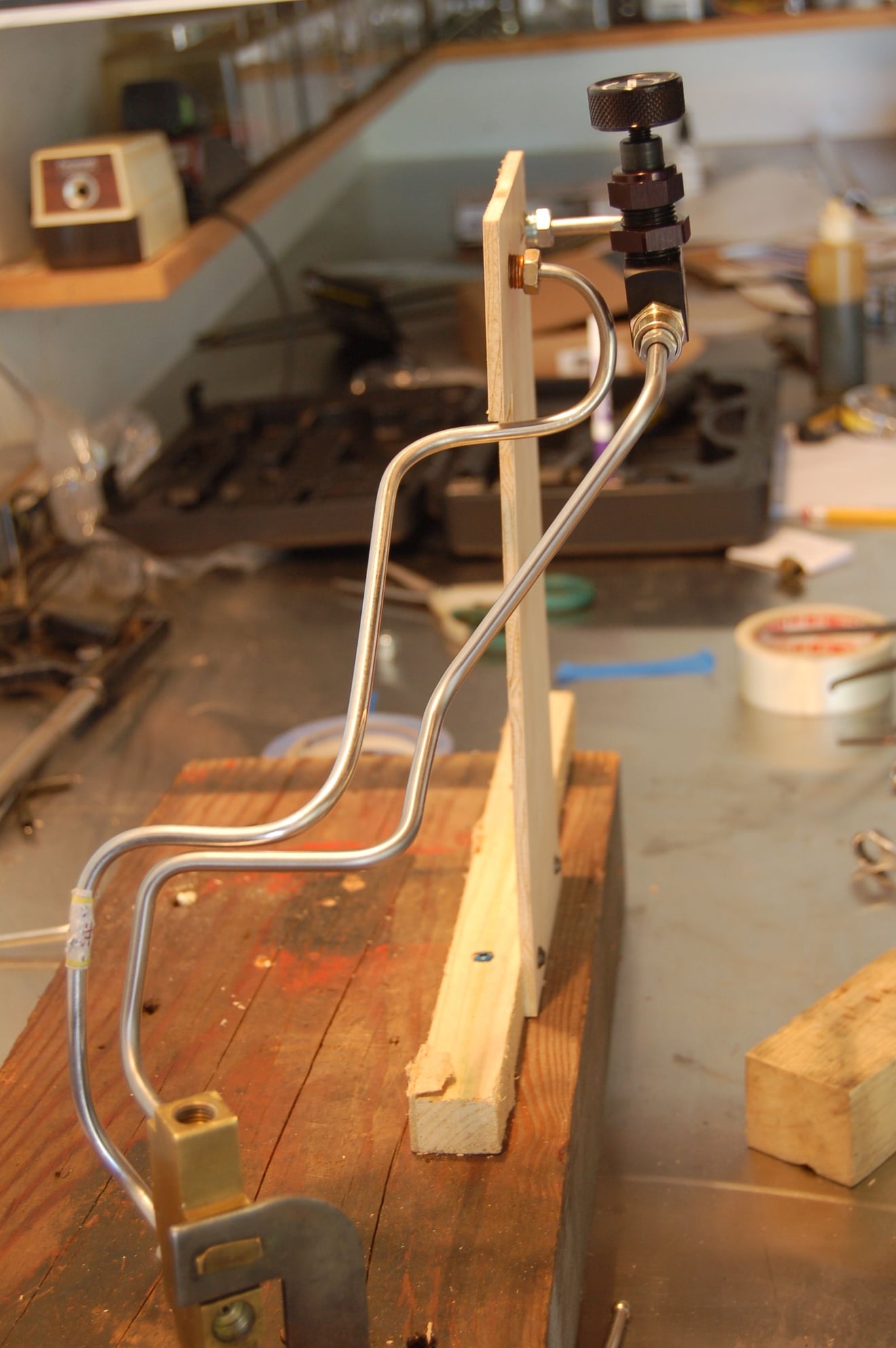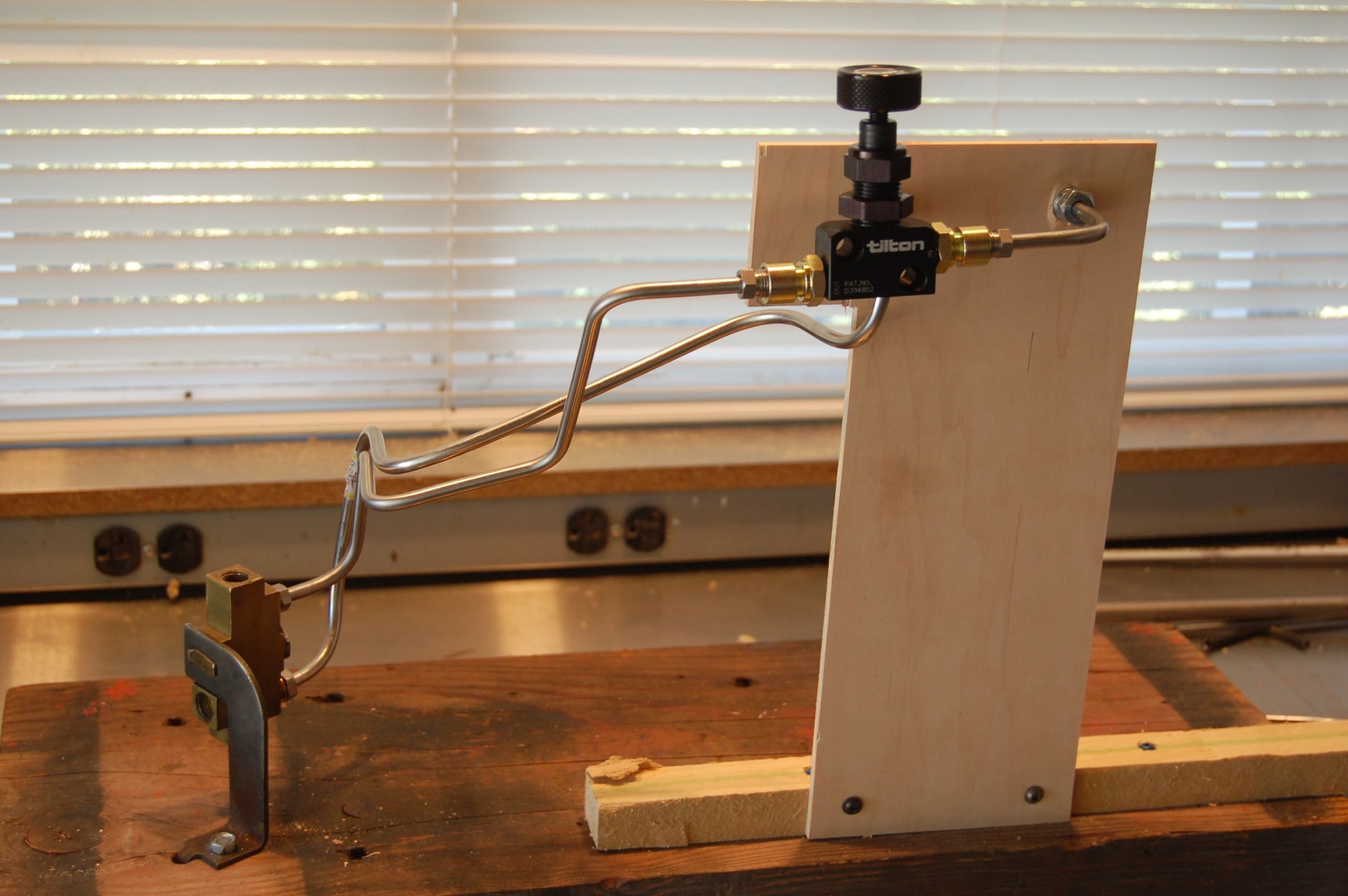Manual brake rebuild with 7/8 inch master?
#21
Melting Slicks


Thread Starter
On stock calipers the hydraulic fluid will exert equal force at both the front and rear calipers, the pistons on the rear are smaller
(1 7/8 vs 1 3/8), this allows the front to approach lock up before the rear due to the lower grip exerted by the smaller pistons on the pads.
Could it be that you need an 'adjustable proportioning valve' and not a smaller M/C?
(1 7/8 vs 1 3/8), this allows the front to approach lock up before the rear due to the lower grip exerted by the smaller pistons on the pads.
Could it be that you need an 'adjustable proportioning valve' and not a smaller M/C?
You are right about the caliper piston creating a factory bias front to rear of about 65/35 even if I have full line pressures everywhere.
My thinking is to leave the front brakes as they are and boost the rear clamping force by bypassing the factory pv.
Last edited by The Money Pit; 12-30-2022 at 08:36 PM.
#23
Melting Slicks


Thread Starter
I am concerned with the safety aspect. I got a pressure gauge to test my theory and it confirmed the pv is dropping 200 psi to the rear during panic braking. The pv will pass full line pressures to 500 psi so front and rear get the same. After 500 psi the rear pressure is restricted.
I plan to keep the factory calipers so by design the rear brakes will always be weaker than the front brakes. As an added safety feature I have 295 55 15 drag radials on the rear and 245 60 15 streets on the front. I would bet the rear will not lock up before the front.
I plan to keep the factory calipers so by design the rear brakes will always be weaker than the front brakes. As an added safety feature I have 295 55 15 drag radials on the rear and 245 60 15 streets on the front. I would bet the rear will not lock up before the front.
The following users liked this post:
ignatz (12-30-2022)
#25
Melting Slicks


Thread Starter
On stock calipers the hydraulic fluid will exert equal force at both the front and rear calipers, the pistons on the rear are smaller
(1 7/8 vs 1 3/8), this allows the front to approach lock up before the rear due to the lower grip exerted by the smaller pistons on the pads.
Could it be that you need an 'adjustable proportioning valve' and not a smaller M/C?
(1 7/8 vs 1 3/8), this allows the front to approach lock up before the rear due to the lower grip exerted by the smaller pistons on the pads.
Could it be that you need an 'adjustable proportioning valve' and not a smaller M/C?
My question is for those that have installed an adjustable valve.
Did you find you really did need it?
One other thing I wanted to mention.
While testing my brake line pressure I stood on the pedal for extended time to check for leaks, pedal fade, and try to see what my max line pressure was, and in testing I actually blew a rear line. In researching what pressures the line should be capable of I found steel line burst pressure to be 5000 psi or more. With only 800 psi I blew a rear crossover line. So, I will be replacing not only the master cylinder, but all hard lines as well. I just got the 427 running and the car has not yet left the garage...........Thankfully.
Last edited by The Money Pit; 01-19-2023 at 03:57 PM.
#26
Safety Car


Member Since: May 2004
Location: los altos hills california
Posts: 3,624
Received 1,136 Likes
on
736 Posts

The Tilton valve as delivered didn't work as advertised. I had to adjust some internals to get it to work. From the picture, I think it was a shim to compress the spring a bit more.

As to what you said, it is to remove the factory valve and replace it with an adjustable tuned as you need it with some expectation that you are going to get more rear authority. My math says the rear brakes on my car were woefully short of authority. That's with a fairly light 3000# car and an LS aluminum motor up front.
For your car, even with straight plumbing to the rear, you may never lock them up. I would start with some math to figure out what your weight transfer is and see how close you are to ideal w/o the valve.. Maybe the factory had it right for a big block without the valve. Early cars had BB's and no valve and when I did this math their #'s looked right. Why they later installed a valve is unknown to me anyway,
You've got the pressure measurements now. The one thing you don't have (without me reviewing your post) is the transfer curve and break point for the factory valve. It may be that that's some additional optimization or insurance. When you start re-engineering GM, it is good to have all the reasons.
Since I have SS plumbing, I first built a rig to get the bends correct. Here's that


I'll look for a picture of what's in the car later today.
Last edited by ignatz; 01-19-2023 at 05:05 PM.
#27
Melting Slicks


Thread Starter
I have a theory. The old big block cars had heavy spring rates, so potentially less pitch under hard breaking. My car also has 550 lb front and 440 lb rear spring rates.
Maybe I don’t need the valve?
Maybe I don’t need the valve?
#28
Safety Car


Member Since: May 2004
Location: los altos hills california
Posts: 3,624
Received 1,136 Likes
on
736 Posts

The analysis isn't that hard. The entire mass of the car m under braking acts at the center of gravity. That is maybe 15" off the ground. So you get F (force) equals m X a from 1G of braking acting on a moment arm of a bit more of a foot to create a torque in foot-pounds. The torque pushes down in front and up in back and relieves some of the weight in back while increasing that weight in front. Essentially it is a short lever arm leveraging a longer arm, that latter being the distances to the wheels from the CG.
The difference between what the car weighs statically and dynamically both at the front and rear give you what the difference in brake authority should be. The springs themselves have little to do with the physics of the situation but they do keep the nose dive constrained. The spring constants would tell you how much the car lifts in the back and dives in the front. Somebody somewhere has the right numbers, but that's to a first order what is going on.
A lot of smart people on this forum, maybe somebody has a diagram with numbers for our cars, if you care to go into it that far, but that is roughly how I imagine GM did their analysis. And I'm sure this stuff is in books better than I just described it.
As to whether you need the valve, the early cars didn't have it. The plumbing was a pain for me but essential to the way I approached this. Keep going I'm interested in how this works out for you. But. .... you're missing a baseline before and after.
The difference between what the car weighs statically and dynamically both at the front and rear give you what the difference in brake authority should be. The springs themselves have little to do with the physics of the situation but they do keep the nose dive constrained. The spring constants would tell you how much the car lifts in the back and dives in the front. Somebody somewhere has the right numbers, but that's to a first order what is going on.
A lot of smart people on this forum, maybe somebody has a diagram with numbers for our cars, if you care to go into it that far, but that is roughly how I imagine GM did their analysis. And I'm sure this stuff is in books better than I just described it.
As to whether you need the valve, the early cars didn't have it. The plumbing was a pain for me but essential to the way I approached this. Keep going I'm interested in how this works out for you. But. .... you're missing a baseline before and after.
#29
Melting Slicks


Thread Starter
The baseline was the brakes on this car never really impressed me. I had a 80 Formula that would literally throw you through the windshield, but was a power four wheel disc car. The vette,...not even close, even with power assist. But no, I do not have any before / after stopping distance data.




